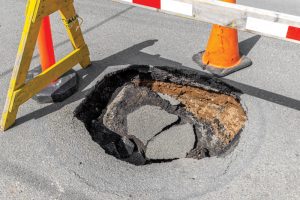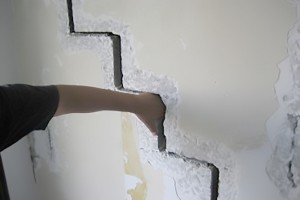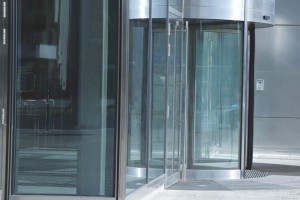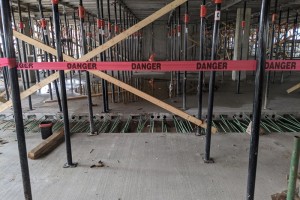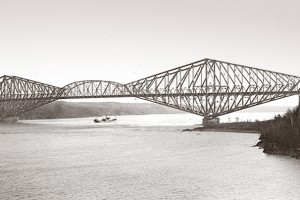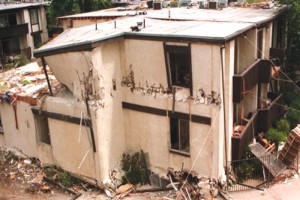Rapid transportation by metro has become an indispensable development for many modern cities. Due to the depth and length of the tunnels, these urban subway lines are often built using circular tunnel boring machines (TBM). Two common types of TBMs are slurry TBMs and earth pressure balance (EPB) TBMs. While the tunnel shield and completed segmental tunnel linings (usually discrete precast concrete panels assembled together or precast rings) are relatively safe, the TBM excavation process can be potentially dangerous. This article looks at some measures and good practices to avoid sinkholes (Figure 1) during closed-face tunneling. The intricacies of tunneling and TBMs are much broader than the overviews included here.
…Review Category : Articles
Structure Movement Monitoring for Efficient Planning and Decision Making
Symptoms of building movement can develop obviously and suddenly, or more subtly over years or decades. Common symptoms include cracks in walls or floors, racked windows and door frames, and sloping or uneven floors. While each of these symptoms causes concern, not all are equal. Some symptoms could be a sign of structural deterioration in need of immediate repair. In contrast, other symptoms may be a remnant of previous movement that occurred years ago and has since stabilized. In between, a range of conditions exist. Given the range of potential repair actions and related costs, it is essential to identify the cause and an appropriate scope of repair.
…Part 1
Delegated design of steel connections and stairs for various steel fabricators has occupied most of my last ten years at the structural engineering firm I represent. I have seen contract documents from structural engineers and architects from all over the country, from sole proprietors working out of their houses to some of the most well-known design firms with a worldwide presence. With that said, I am often asked by exasperated fabricators or freelance detailers about contract documents that just do not make any sense to them. Sometimes, I am even offered work because the contract documents are so confusing that the fabricator mistakenly thinks design is being delegated to them. Thus, I sometimes serve as an interpreter first before serving as an engineer, followed by a stint as an unofficial defense attorney of our profession when the cause of the confusion becomes apparent.
…Part 2: Foundations (Chapter 18)
This five-part series (Part 1, STRUCTURE, November 2021) includes discussion of significant structural changes to the 2021 International Building Code (IBC) by the International Code Council (ICC). This installment includes an overview of changes to Chapter 18 on foundations and soils. Only a portion of the total number of code changes to this chapter are discussed in this article. More information on the code changes discussed here can be found in the 2021 Significant Changes to the International Building Code, available from ICC.
…Often Overlooked and Misunderstood
For over 40 years, the traditional pour strip in concrete construction has been an issue of contention between the engineer of record (EOR) and the contractor, and this challenge continues today. The EOR desires a high-quality slab, which requires more pour strips that are left open longer. The contractor wants faster construction, which requires fewer pour strips and pouring them back sooner. Shrinkage and restraint-to-shortening (RTS) are at the core of this age-old dilemma, and EORs should not have to sacrifice quality for cost and schedule.
…The Top Non-Technical Skill Structural Engineers Need in an Evolving AEC Industry
In 1996, a bespectacled nerdy high school student leaped out of her car with a movie rental. She slid in the rain, dashing to the Blockbuster drop-off a mere minute before closing. Her singular focus: to return the movie and avoid the late fees that cost more than the initial rental. That teenager was me.
…Secondary drainage system rain loads have been updated in the 2021 International Building Code® (IBC) to be consistent with ASCE 7-16, Minimum Design Loads and Associated Criteria for Buildings and Other Structures. The following text shows the specific change in the 2021 IBC. Strike-through indicates deleted text and underlined denotes new text.
…After the collapse of the Quebec Bridge in August 1907, an Engineering Committee was formed under the supervision of the Transcontinental Railway Commission to undertake a complete redesign of the bridge. The Board consisted of one Canadian, H. E. Vautelet, one American, Ralph Modjeski, and one British Engineer, Maurice Fitzmaurice. Engineering News wrote of the Board,
…The Structural Engineering Licensure Coalition (SELC), an organization formed by the Council of American Structural Engineers (CASE), the National Council of Structural Engineers Associations (NCSEA), the Structural Engineering Institute (SEI), and the Structural Engineering Certification Board (SECB), has been advocating since 2012 for structural engineering (S.E.) licensure as a post-professional engineer (P.E.) credential in all U.S. jurisdictions. As part of that effort, SELC recently published its Vision for the Future of S.E. Licensure (the Vision), which builds on vision documents published by its parent organizations.
…The scientific method is best described as a series of sequential steps: Question, Research, Hypothesis, Experiment, Observation, and Conclusion. If the hypothesis is “proven” through experiment and observation, the Conclusion becomes a Theory generally supported and accepted by other subject-matter experts. This process takes time and effort and cannot be rushed.
…
